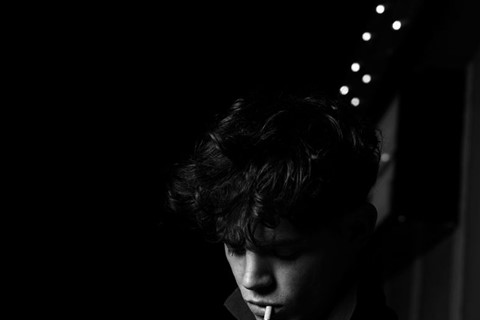The work of Hedi Slimane needs no introduction – the ambience of his language and the “silhouette Slimane” developed at Yves Saint Laurent and Dior Homme continues to reverberate through the streets today. By the end of 2007, at which time Slimane
The work of Hedi Slimane needs no introduction – the ambience of his language and the “silhouette Slimane” developed at Yves Saint Laurent and Dior Homme continues to reverberate through the streets today. By the end of 2007, at which time Slimane stopped designing to focus solely on photography, he had accomplished the remarkable feat of turning a generation of adolescents on to style.
It's not often that a change between disciplines is successful. But Slimane’s photographic output – he captures moments the way some people nonchalantly jot notes – is centered on the same motivations and preoccupations as before. He is undoubtedly a poster boy for the relationship between music and identity.
“I was literally born with a David Bowie album in my hand,” Slimane tells AnOther via email from Los Angeles where, these days, he spends most of his time. “He was Adam and Angie Bowie was Eve. Style and men’s fashion in particular were, for me, always connected to stagewear. My work is therefore about the stage, or the idea that life and stage collide into the same hedonistic daily routine.”
A key reference point in Slimane’s body of work is the moment, around 2002, when electronic music peaked, segued into electroclash and burned gloriously, marking a shift in the soundtrack to his life. “I was moving from Berlin and the beat of an ethereal electronic sound, to the birth of a chaotic indie rock scene in London,” he says. “It was the beginning of it all, and I just loved every second of it. At the time, besides documenting the scene and publishing books, I used my project at Dior Homme as an open tribune to introduce the birth of this movement. My collections were truly a collection of friends, musicians, and fans. They were all over my shows, composing music for it, strutting my runways with the nonchalance of a generation in style. The Rakes found a title for my show ‘The world was a mess but his hair was perfect.’
Following his extensive documentation of young Londoners (amongst others, of course) over the past few years, Slimane has since shone light on the Jerkin’ movement, a West Coast subculture of rap kids in skinny jeans throwing shapes. An anti-violence ritual that diffuses aggression in the same way that breaking tribes would ceremoniously showdown, the “silhouette Slimane” is their armour.
“A friend of mine, Donovan Leitch, told me about it,” he expands. I wanted to investigate the subcultures of Los Angeles where I live now. I was curious about how this movement adopted the vocabulary of my work, and all those boys and girls were really inspiring for me. The joy, the sense of community, the wit – it had so much authenticity. It was the first subculture movement derived from rap to be born on the internet.”
Jerkin’, Slimane agrees, is an example of how influences are becoming broader, more disparate and challenging – an augury of new cultural languages to come. Whatever they are, one thing is clear – Hedi Slimane will be there to both document and catalyse it; an absorber of culture as well as an instigator.
Dean Mayo Davies is a writer based in London. Formerly fashion features editor at Ponystep, he now contributes to magazines AnOther Man, Vogue Hommes Japan, i-D, Zoo and Dazed & Confused






